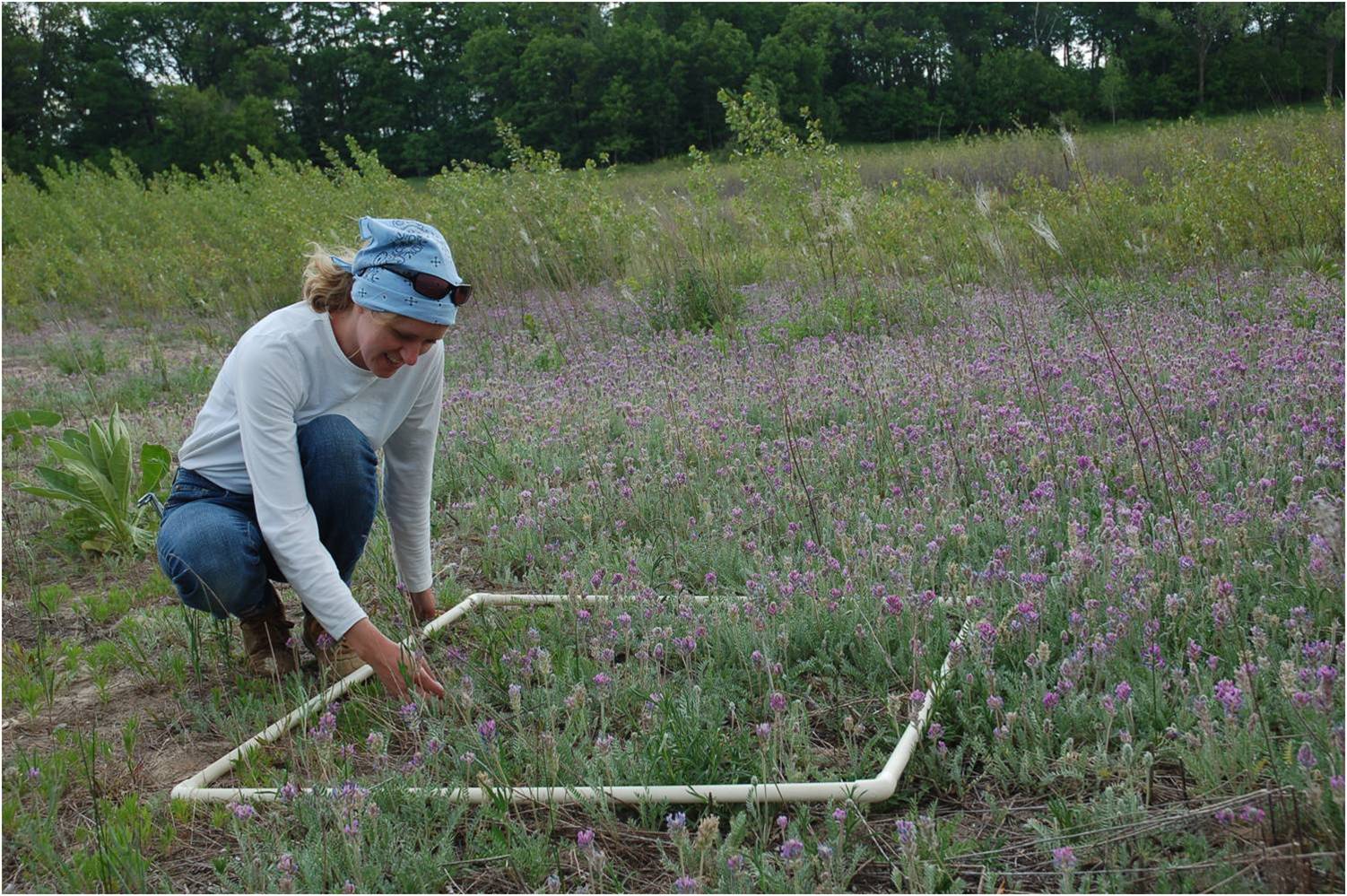1.
Demography of Oxytropis campestris var.
chartacea
Fassett’s
Locoweed (Oxytropis campestris var. chartacea)
is a threatened species that is endemic to Wisconsin lake shores where the
water levels fluctuate frequently. When
water levels are low, plants that germinate persist at either very high or
relatively low densities within a population. Although plants that have germinated may not
survive in flooded lakes, the seed bank may persist for many years (or decades).
Seed banks may allow plant populations
to persist during bad years (when lakes flood, in this case), thus may be very
important to the long term survival of the species, as the seeds that germinate
after periods of flooding do so in relatively competitor-free space. But little is known about the population
biology of these plants. Although seed
banks can profoundly affect plant demography by increasing population growth
rates after disturbances (Adams et al. 2005), relatively few studies have
incorporated the effects of seed banks on plant demography (Adams et al. 2005,
Cabin et al. 2000, Kalisz and McPeek 1992, Kauffman and Maron
2006, Sletvold and Rydgren
2007). Since spring 2009, we began collecting data
to address three questions about demography in O. campestris var. chartacea: 1) What are the growth rates in two of the
larger populations (Plainfield Lake, and Pickerel Lake), and how are
demographic (vital) rates affected by plant size and population density? 2) Under
what conditions does the seed bank persist?
What effect does the seed bank have on the population biology of O.
campestris var. chartacea (i.e., whether a population persists,
increases, or declines)? 3) How do potential
competitors affect individuals and populations of O. campestris
var. chartacea?
Population
sizes have decreased since 2006. So far,
plant size affects survival, growth and reproduction, but effects of plant
density remain unclear. We have tagged well
over 1000 plants, along each of five transects through one dense and one-two
sparse areas at each lake. We are
currently using a size-based matrix projection model, but we hope to develop an
integral projection model (and later, a stochastic model), which will help us
better understand the population biology of this rare plant.


Other Participants and Collaborators: Devin Berge, Craig Anderson (Wisconsin DNR)
2. Morphological
Evolution in Swallowtail caterpillars

Larvae of several swallowtail caterpillars (e.g., Papilio glaucus and P. troilus) have morphological features that are similar in appearance to the heads of snakes. Although several authors have speculated that these morphological patterns increase their survival by reducing predation by birds, to my knowledge, this assumption has never been tested. To test whether caterpillar features deter predators, I built caterpillars out of modeling clay, which can be used to assess relative rates of bird predation. Specifically, I designed 6 caterpillar models, with or without the following three features shared by P. glaucus larvae: enlarged thoracic region, yellow spots on the dorsal side (“eye spots”), and smaller black spots inside the yellow spots (“concentric spots”). We affixed all six models to branches in black cherry trees (Prunus serotina), which are one of the major hosts of P. glaucus larvae. After four days of natural exposure to predators, I measured the height of each model in the trees, and the impressions of bird beaks left in the models. Results indicate that although birds were more likely to attack models with eye spots in both years, these effects were not significant. However, birds attacked models with concentric spots significantly less than other models in 2009, but not in 2010. The effect of height in the tree was not significant, but the effect of tree was significant, perhaps indicating that if birds encountered one larva on a tree, they were likely to find others on the same tree. In both years, many of the models with eye spots (or concentric spots) and beak marks were attacked on the spots themselves. Given the proportional surface area of the spots relative to the model surface area exposed to predators (the upper sides), the number of spot-bearing caterpillar models that were attacked in the eye spots themselves was greater than expected if attacks were uniformly distributed. This indicates that although avian predators may avoid attacking larvae with concentric spots, the birds that do attack are attracted by the spots. Many alternative hypotheses remain to be tested, including 1) birds that attack the spots are curious about the spots because they are novel or unexpected features, or 2) birds are intending to disable potential predators or prey items by attacking their eyes.
Other Participants: Devin Berge, Porscha Carriveau, Monica Hydinger, Noella Martel Segura, Ben Randlett, Lea C. Ray, Dr. Emmet Judziewicz, Dr. Virginia Freire, and the Schmeeckle Reserve